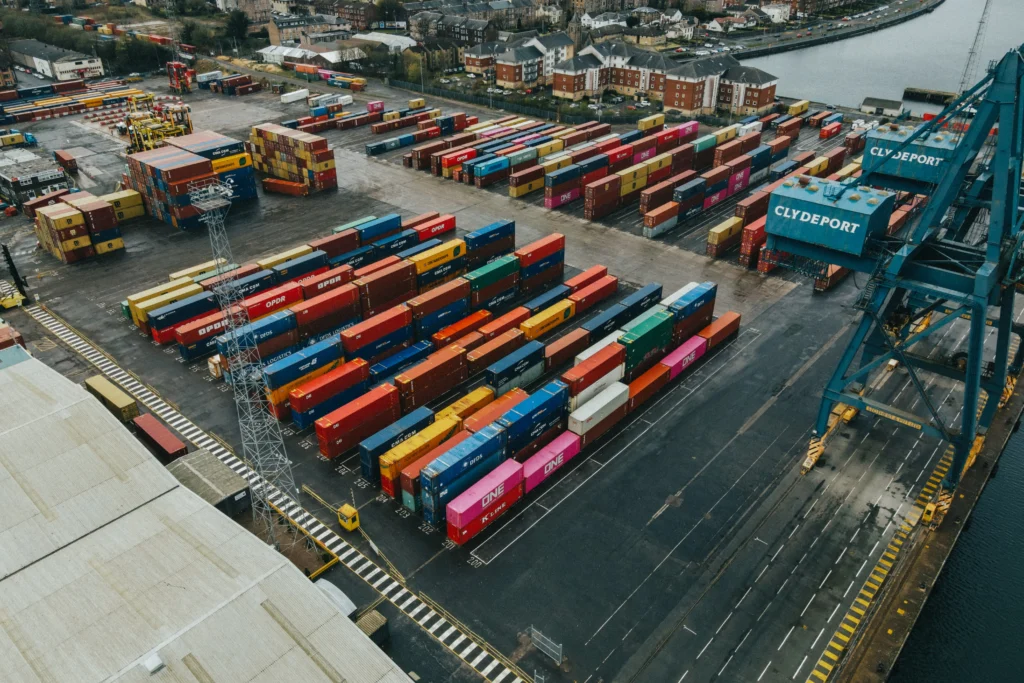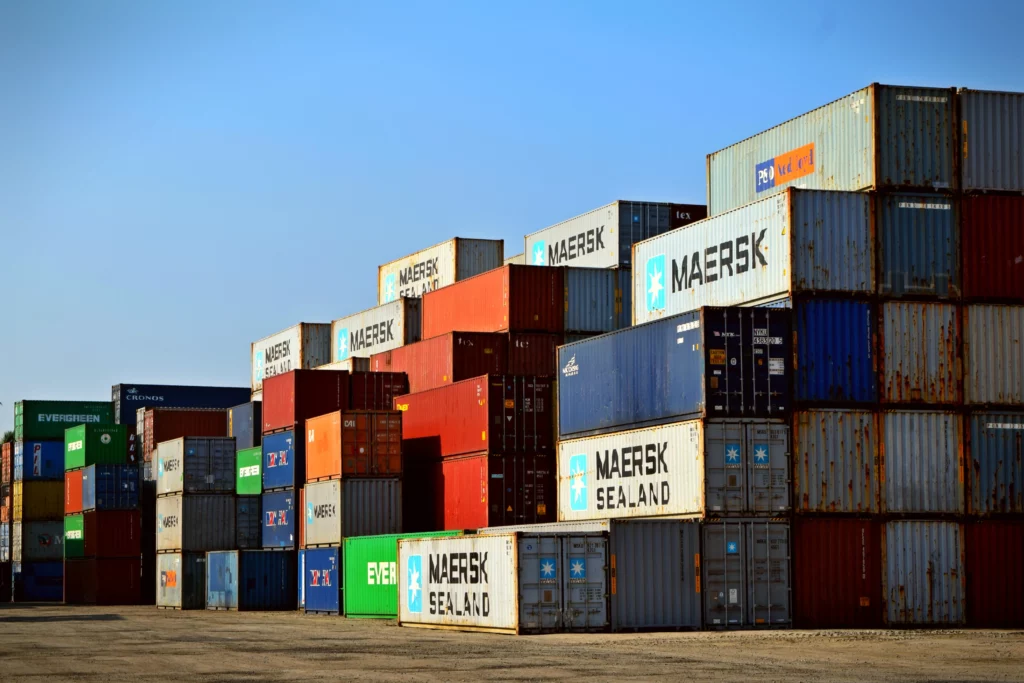While detention and demurrage fees are often unavoidable aspects of shipping and transportation, they can collectively impact the cost-effectiveness and efficiency of cargo movement, both positively and negatively. Detention fees are levied when transport vehicles, such as trucks or rail cars, exceed a predetermined time at the shipping or receiving facility. On the other hand, demurrage fees come into play during the extended use of cargo containers beyond their allotted free time at ports or terminals. The intersection of these fees becomes particularly evident in high-traffic areas such as the Port of Los Angeles, where managing time is as vital as managing cargo.
Today, we’ll discuss the nuances of detention and demurrage fees, provide strategies to avoid them, and, therefore, optimize your logistics operations for both time and budget efficiency.
Detention and Demurrage: Impact on Supply Chains

Efficient logistics requires a clear understanding of various fees, particularly detention and demurrage, which, while often used interchangeably, have distinct implications. Detention fees are incurred when transport vehicles, like trucks or railcars, remain at a loading or unloading facility beyond the allotted free time. This extended use of transportation assets can lead to significant charges, especially in high-traffic zones. Demurrage fees, conversely, apply to cargo containers that overstay their welcome at a port or terminal, occupying space beyond their scheduled tenure.
What are per diems? Derived from Latin, meaning “per day,” the term “per diems” is frequently used in the shipping industry to denote daily charges applied to equipment. Many terminals and shipping lines use “detention” and “per diem” synonymously, referring to the daily fees charged for the extended use of containers or transportation equipment. These fees, whether labeled as detention, demurrage, or per diems, are critical factors in logistics management.
The U.S. State Department and various government bodies often have their set of per diem rates, influencing how companies calculate and manage these costs. Mismanagement or underestimation of these fees can have a ripple effect, disrupting supply chains and straining relationships with partners and clients. The cost implications of detention and demurrage fees can spiral, potentially causing budget overruns and logistical nightmares. Understanding these factors and their impact on logistics chains promotes smooth operations and healthy business relationships.
Turning Costs into Opportunities

Per diems, often linked with demurrage and detention fees, can be reimagined as an innovative solution rather than a mere expense. Per diems, essentially daily rates charged for the use of equipment or facilities, offer a structured solution to managing time-sensitive logistics operations.
Examples of the advantageous use of per diems are seen in businesses that deal with irregular or seasonal demand. For these companies, per diems provide a flexible and cost-effective way to handle sudden spikes in cargo without the need for long-term investments in additional equipment or storage facilities. This flexibility is crucial in maintaining a competitive edge, especially in industries where demand can be unpredictable.
Per diems can also be beneficial in international trade. Companies operating across borders often face varied and complex regulations. The standardized per diem rates, like those established by the U.S. State Department for international transactions, offer a clear and predictable cost structure. This transparency aids businesses in budgeting and financial planning, ensuring that there are no hidden or unexpected charges.
Furthermore, per diems can incentivize efficient use of equipment and space. For instance, at busy ports like Los Angeles, per diem charges encourage shippers and receivers to expedite loading and unloading processes, thus reducing congestion and improving overall port efficiency. This efficiency benefits individual businesses by reducing potential detention and demurrage fees and enhancing the port’s operational flow.
In addition, per diems and demurrage fees can lead to significant cost savings. By imposing these charges, companies are prompted to optimize their logistics and supply chain processes. This optimization often results in quicker turnaround times, reduced idle periods for equipment, and more efficient use of storage spaces. The cumulative effect of these improvements can be a considerable reduction in overall logistics costs, making per diems a strategic tool rather than a financial burden.
Per Diems in Your Logistics Strategy
Despite their negative aspect, per diems may become a proactive measure against unexpected events and expenses. Understanding and implementing per diems may return with both efficient and cost-effective benefits.
The first step in implementing per diems is a comprehensive understanding of what per diems are and how they apply to different aspects of logistics, including container usage and equipment rental. Familiarizing oneself with the specific per diem rates, such as those set by the U.S. State Department for international transactions or those prevalent at major ports like Los Angeles, is crucial. These rates often vary based on location and the type of equipment used, making knowledge of these details vital for accurate budgeting and planning.
Once the rates and conditions are understood, the next step is to integrate this knowledge into the logistics strategy. This involves efficient planning of cargo movement to minimize the risk of incurring demurrage and detention fees. Efficient scheduling and robust contingency plans are essential to handle potential delays and avoid accumulating per diem charges. They help manage and maintain strong relationships with shipping partners and clients.
Staying updated with government per diems and industry standards is important for adapting to changes in the logistics landscape. Regularly reviewing and adjusting logistics plans according to these updates can lead to more predictable and controlled shipping expenses.
Avoid Unwanted Detention and Demurrage Fees with US InBound

Improperly managed detention and demurrage fees can have dire consequences for businesses, ranging from strained budgets to disrupted supply chains. Recognizing this, US InBound employs a proactive approach to managing detention and demurrage fees. They provide expert guidance on the nuances of per diems, particularly in the context of the U.S. State Department’s per diem rates and the specific rates applicable at major ports like Los Angeles. This comprehensive understanding allows businesses to anticipate potential fees and incorporate mitigation strategies.
One practical tip offered by US InBound is meticulous planning and scheduling of shipments. Timely and efficient transportation reduces the likelihood of incurring detention fees due to delays at loading and unloading facilities. For managing demurrage fees, they advise optimizing container turnaround times and maintaining regular communication with port authorities and shipping lines.
Staying updated with the latest government per diems and industry standards enables businesses to swiftly adapt their strategies to evolving logistic environments. US InBound keeps its finger on the pulse of the latest news and events in this field to ensure that your detention and demurrage fees can be minimized even in the face of disruptions.
Final Thoughts:
Detention and demurrage fees, per diems, may significantly impact logistics operations if not managed appropriately. However, these challenges can be effectively navigated with strategic planning and the right guidance, such as that provided by US InBound. It offers valuable insights and practical tips to help businesses avoid or minimize these fees. Collaborating with a knowledgeable partner like US InBound can be a game-changer for businesses looking to streamline their logistics operations and reduce the risks associated with detention and demurrage fees.




